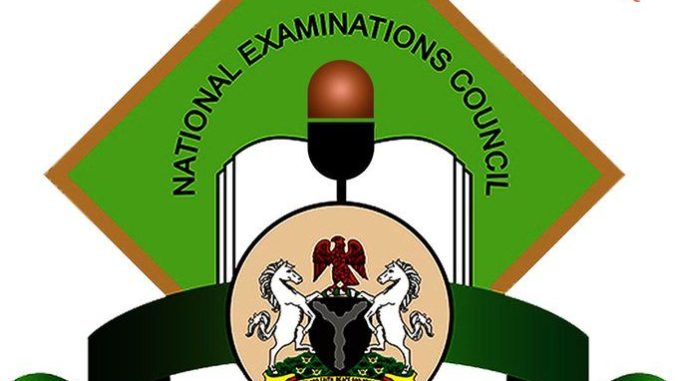
NECO GCE HEALTH EDUCATION PRACTICAL
============================================
(1a)
Human kidney.
(1b)
C – Renal cortex
D – Renal medulla
E – Renal pyramid
F – Renal pelvis
G – Ureter
H – Renal artery or vein
(1c)
(PICK ANY ONE)
(i) The kidney regulates water balance by filtering blood to form urine.
(ii) It eliminates metabolic waste products such as urea.
(1d)
(PICK ANY ONE)
(i) Kidney stones
(ii) Chronic kidney disease (CKD)
(iii) Urinary tract infections (UTI)
(iv) Glomerulonephritis
===================================================
(2a)
Human vertebral column (spinal column)
(2b)
X – Cervical vertebrae
Y – Thoracic vertebrae
Z – Lumbar vertebrae
M – Sacral vertebrae (Sacrum)
(2c)
(PICK ANY THREE)
(i) Scoliosis (lateral curvature of the spine)
(ii) Kyphosis (excessive outward curvature of the thoracic spine)
(iii) Lordosis (excessive inward curvature of the lumbar spine)
(iv) Flat back (loss of normal spinal curves)
(v) Bow legs (outward curvature of the legs, affecting alignment)
(vi) Knock knees (inward curvature of the legs, affecting postures
(2d)
(PICK ANY ONE)
(i) Provides structural support for the body.
(ii) Protects the spinal cord.
(iii) Enables movement and flexibility of the body.
(iv) Acts as an attachment point for ribs and muscles.
===================================================
(3a)
The digestive system
(3b)
K – Esophagus
L – Liver
M – Stomach
N – Small intestine
O – Large intestine
P – Rectum
(3c)
(PICK ANY THREE)
(i) Hiatal hernia
(ii) Abdominal muscle weakness
(iii) Spinal deformities affecting posture
(iv) Lordosis (compressing the digestive organs)
(v) Diaphragm dysfunction
(vi) Postural hypotension
===================================================
(4)
In a Tabular form
=DEFICIENCY DISEASE=
(i) Rickets
(ii) Scurvy
(iii) Nyctalopia
(iv) Goitre
=INFECTIOUS DISEASES=
(i) Malaria
(ii) Encephalitis
(iii) Hepatitis
(iv) Tuberculosis
=NON-INFECTIOUS DISEASES=
(i) Diabetes
(ii) Asthma
(iii) Leukemia
(iv) Hypertension
===================================================
(5ai)
A narcotic is a drug or substance that affects mood or behavior and is used for pain relief, often leading to dependence when misused.
(5aii)
(i) Morphine
(ii) Heroin
(iii) Codeine
(5bi)
Contraception refers to methods or devices used to prevent pregnancy.
(5bii)
(i) Use of condoms
(ii) Vasectomy
(iii) Withdrawal method (coitus interruptus)
===================================================
(6ai)
Blood clotting is the process by which blood forms clots to stop bleeding and prevent excessive blood loss from wounds or injuries.
(6aii)
(i) Oxygen
(ii) Nutrients
(iii) Hormones
(6bi)
(i) Blood group O negative (O−).
(ii) Blood group AB positive (AB+).
(6ci)
Population census is the official counting of all individuals in a country or specific area, conducted periodically to gather demographic data.
(6cii)
Birth rate
===================================================
(7)
A host is an organism that provides resources or shelter for another organism. WHILE, A parasite is an organism that lives on or in a host and benefits at the host’s expense.
(7b)
First aid refers to the immediate care given to an injured or ill person before professional medical help is available.
(7c)
(i) Promotes responsible sexual behavior.
(ii) Reduces the risk of sexually transmitted infections (STIs) and teenage pregnancies.
===================================================
(8a)
(i) Immunity: The ability of an organism to resist or defend against diseases and infections.
(ii) Heredity: The process through which genetic traits are passed from parents to offspring.
(8b)
Bereavement is the period of grief and mourning after the loss of a loved one.
(8c)
(i) Recycling
(ii) Landfilling
(iii) Incineration
(8d)
National Environment Management Authority.

Leave a Reply